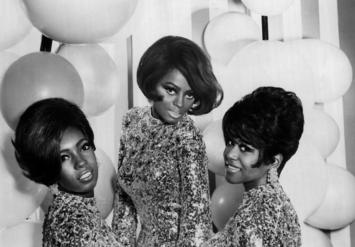
I’m reading Once in a Great City: A Detroit Story by David Maraniss, a book I plan to review for City Journal. But I want to highlight something briefly that really caught my eye about Motown Records. It’s no secret Detroit punches above its weight in musical influence, and the Motown sound was clearly a big part of that. Maraniss asks “Why Detroit? What gave this city its unmatched creative melody?” He lays out his theory of the case with regards to Motown Records.
The family piano’s role in the music that flowed out of the residential streets of Detroit cannot be overstated. The piano, and its availability to children of the black working class and middle class, is essential to understanding what happened in that time and place, and why it happened, not just with Berry Gordy, Jr. but with so many other young black musicians who came of age there from the late forties to the early sixties. What was special then about pianos and Detroit? First, because of the auto plants and related industries, most Detroiters had steady salaries and families enjoyed a measure of disposable income they could use to listen to music in clubs and at home. Second, the economic geography of the city meant that the vast majority of residents lived in single family homes, not high-rise apartments, making it easier to deliver pianos and find room for them. And third, Detroit had the egalitarian advantage of a remarkable piano enterprise, the Grinnell Brothers Music House. [emphasis added]
Like most things, the rise of Motown Records was multifactoral. Maraniss keys in on the prevalence of pianos in black homes. Note his factors creating this, to which one could also add the first rate musical education available to public school students at places like Cass Tech that he refers to multiple times throughout the text.
But of course I highlight: “the vast majority of residents lived in single family homes, not high-rise apartments, making it easier to deliver pianos and find room for them.”
It’s no secret that Detroit, like most Midwest cities, is a city of single family homes. Detached houses have a bad rep in planning circles today, but in this case the space they afforded allowed black families to have a piano – and in Motown Records founder Berry Gordy, Jr.’s case, a baby grand at that. This would be much more difficult in a microapartment to say the least.
Let’s not get too carried away. As Gordy was founding Motown, Jane Jacobs was pointing out the trouble with Detroit’s “gray belts” of single families that were already being abandoned. Pete Saunders has highlighted Detroit’s housing stock as one of the nine key urban planning reasons Detroit failed (ironically, in part because today these houses are too small).
Nevertheless, no preponderance of single family homes, no widespread pianos in black Detroit homes, and likely no Motown Records either. The history of American music was literally shaped by the single family housing character of Detroit. If we can acknowledge its flaws, it’s only fair to acknowledge it’s unique strengths too.
What this suggests is that cities shouldn’t despair too much about their existing built form, even if in many cases they are struggling with it. The question might be, what does that form enable that you can’t get elsewhere? Grinnell Brothers Music figured out that auto money + under-served black households + single family homes meant a potential market for pianos. And the rest is history. What other market opportunities exit right before our urban planning eyes that we have not yet noticed?
Aaron M. Renn is a senior fellow at the Manhattan Institute and a Contributing Editor at City Journal. He writes at The Urbanophile, where this piece originally appeared.












